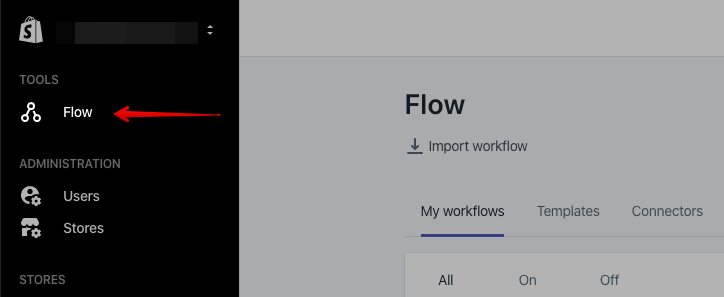
Automate tasks with Shopify Flow across your stores
Shopify has now made it easier to manage workflows across all shops without having to log in to each store individually.
It's called Shopify Flow, where you select triggers, conditions, and actions to create these automations. Only available for Shopify Plus subscriptions.
Shopify Flow is an e-commerce automations platform that saves you lots of time, and you can instead focus on developing your businesses. With Shopify Flow it's easy to automate tasks and ideas across all your stores. Imagine if you had 7 different stores and you had to individually log in to them and set up exactly the same automation.
Couldn't you spend your time better?
Do it once with Shopify Flow, and you will not have to think about this anymore.
To use Shopify Flow, you need to select triggers, conditions, and actions to create these automations, and here are some examples:
Trigger: A trigger is an event that starts a workflow. This can be something that happens in your store or in an app. E.g. that a new order is created in your webshop.
Condition: A condition determines whether actions are performed based on the conditions you specified. E.g. a condition is specified to check whether the total amount paid for more than DKK 500.
Action: An action is a change made in your store or in an app if the condition is met. The completes the workflow. E.g. if the total amount paid for the order is over DKK 500, a tag is added to the customer account from which the order was placed.
Where Shopify Flow can help you automate
The buying experience:
- Create a support ticket when you receive a negative review.
- Track negative product reviews in a spreadsheet.
- Send daily top searches and result notifications.
Customer management:
- Customize marketing by tagging customers based on buying behaviour.
- Organize customers by order size.
- Tag and track conversion of customers ordering samples.
- Track customers who refund items over DKK 500.
Inventory management:
- Get notified when the products are out of stock and show them in your store.
- Hide and show products based on stock.
- Standardize tags for new products.
Risk management:
- Add high risk orders to review.
- Send a high risk order notification before withdrawing payment.
- Cancel and refill high risk orders.
Order processing:
- Add international orders to a spreadsheet.
- Send a fast shipment message to the logistics team.
Loyalty program and customer relation:
- Give loyalty points for adding items to a wish list.
- Start a win-back email sequence when customers are leaving.
Campaigns:
- Add a free gift for orders over DKK 500.
- Write a discount code after another order.
- Handwritten mail note after third order.
There is not one thing you can not automate with Shopify Flow across all shops and thereby save a great deal of your time.
Shopify Flow at the organizational level

If you have access to Shopify Flow at the organizational level, where you can control all your stores, you can perform the following actions:
- Create and edit workflows.
- Use in-store workflows without having to install the Shopify Flow app.
- Copy workflow directly from one store to another.
This allows you to manage workflows for all stores without logging in to each one.
If you only want to use Shopify Flow at a specific store, you can install the Flow app in that store and give them access to the store-level app instead of giving them access to Flow at the organizational level.







